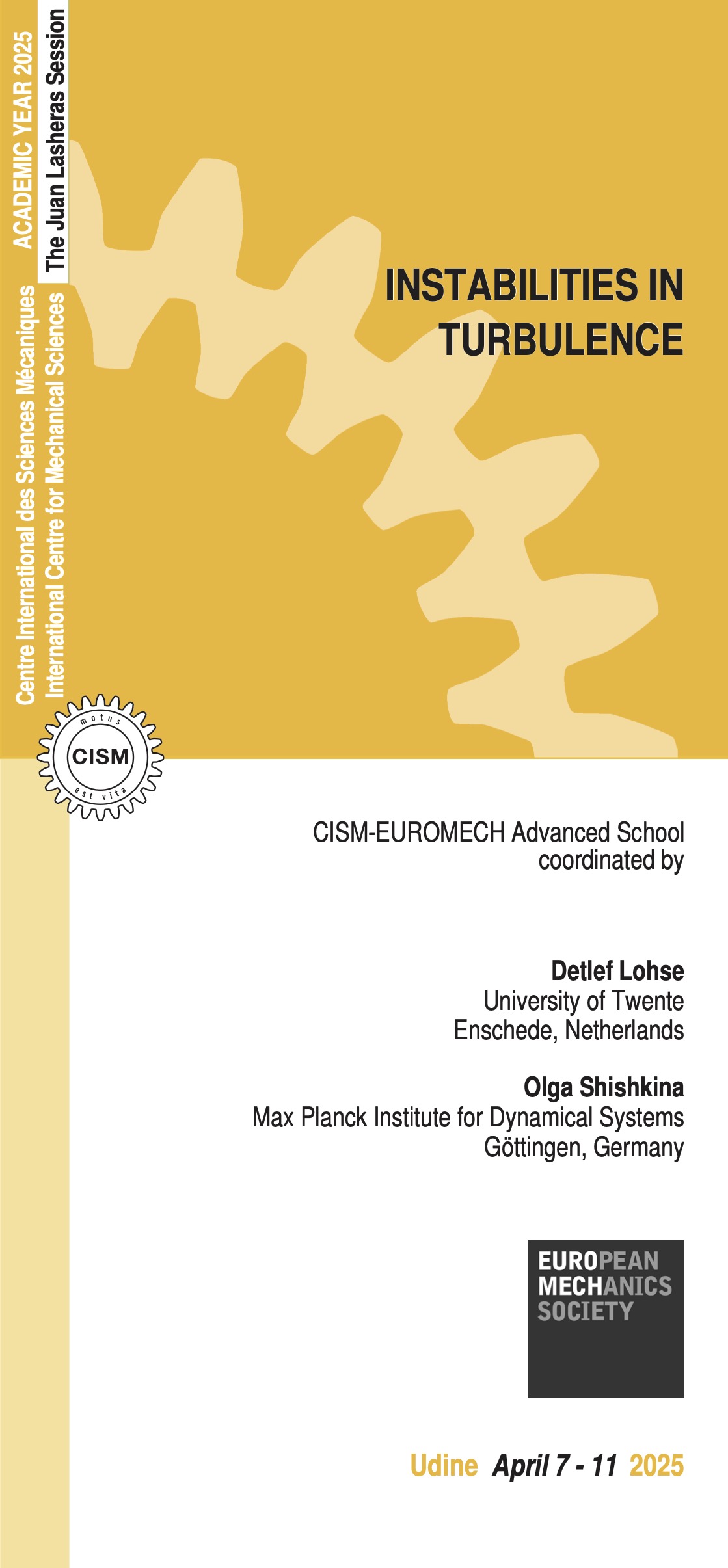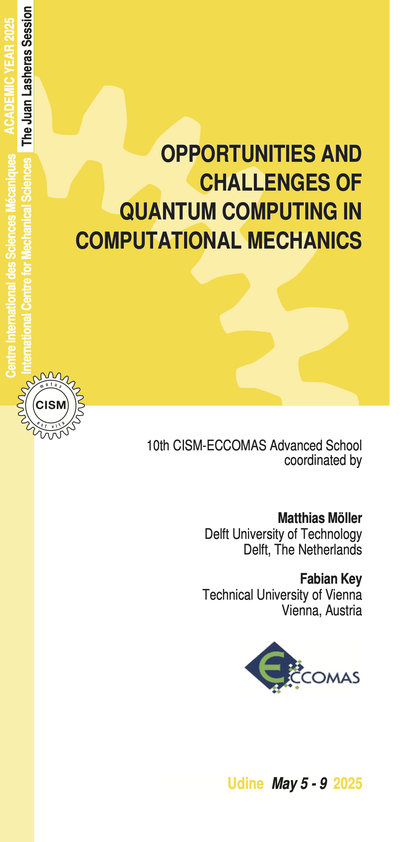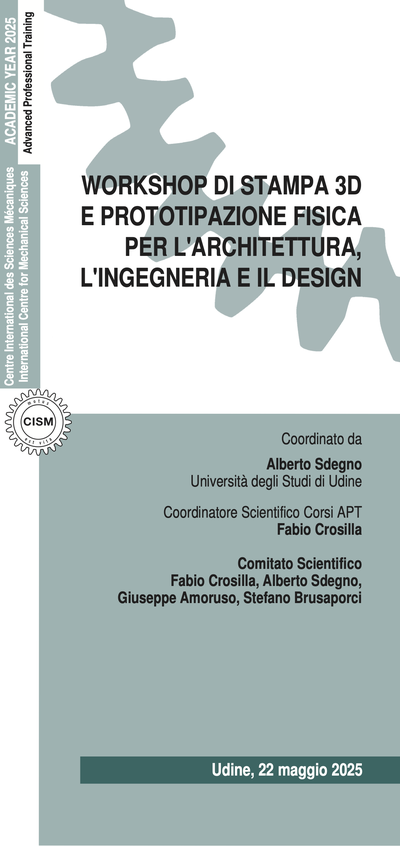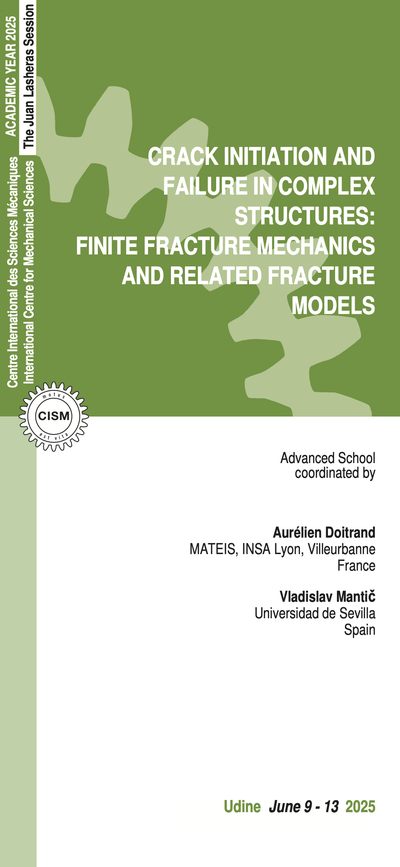Turbulence is one of the last unsolved problems in classical physics. It is omnipresent in nature and technology, and many of today’s societal problems are deeply connected with turbulence, from ocean flow and mixing in the ocean, melting of glaciers, pollution in the atmosphere or in the ocean, climate, processing of fluids in the industry, transport in pipelines, etc. Turbulence has been approached from various sides, namely from statistical and theoretical physics, from mechanical or chemical engineering, from the applied mathematics point of view, and from the practitioner’s point of view, who works in oceanography or geophysics. All of these approaches have their justification and their strengths, but also their limitations.
Going back to Kolmogorov, there has been the paradigm in the more fundamental turbulence community of one universal state of homogeneous isotropic turbulence. In the last 15 years or so it has become more and more clear that this is not the case and that there can be several different states of turbulence, with transitions between these states. The transitions between the different states normally are of subcritical nature, just as the transition from laminar pipe or channel flow to turbulent pipe of channel flow. There, the origin of the subcritical nature is the nonnormality of the operator, combined with the nonlinearity of the Navier-Stokes equation. The nonnormality is intimately related to the local shear of the flow. All this also holds for turbulent flow, where one locally also has strong shear.
One example of a transition between different turbulent states is the transition between classical Rayleigh- Bénard turbulence and ultimate Rayleigh-Bénard turbulence. The transition leads to considerably enhanced heat transport. Viewing this transition in the nonnormal-nonlinear context has resolved various controversies in the field and further intensified the interest in the Rayleigh-Bénard convection and related thermally driven turbulent systems such as horizontal convection, vertical convection, internally heated convection or buoyancy-driven systems such as stratified inclined duct flow. However, the fully developed turbulence community traditionally had been disconnected from the community focusing on the transition from laminar to turbulent flow. One objective of the workshop is to bring together these two communities for their mutual benefit, resulting in the transfer of experimental, numerical, and theoretical methods and defining new joint problems.
Other examples of transitions between different turbulent states have been observed in the von Karman flow and Taylor-Couette flow. Also Rayleigh-Bénard turbulence knows further transitions, namely the one from zonal flow to flow with convection rolls or from turbulent flow with n convection rolls to that with n+1 or n-1 convection rolls. Questions to ask on all these systems with multiple turbulent states are: How to trigger a transition? What is the hysteretic character of the transition? What are the transport properties (heat, mass, momentum) of the different states? What are the lifetimes of the states, depending on the control parameters? Do local disturbances to one state grow and finally overwhelm the global flow structure and lead to a transition or do they die out?
The lecturers are all renowned scientists having worked on the transition to turbulence and on fully developed turbulence. All of them are Fellows of the American Physical Society. They have backgrounds in mathematics, physics, and mechanical engineering.
D. Lohse and O. Shishkina, Ultimate turbulent thermal convection, Phys. Today 76(11), 26-32 (2023); also: Ultimate Rayleigh-Bénard turbulence, Rev. Mod. Phys., to appear (July 2024).
D. Barkley, Theoretical perspective on the route to turbulence in a pipe, J. Fluid Mech. 803, P1 (2016).
M. Avila, D. Barkley, and B. Hof, Transition to turbulence in pipe flow, Annu. Rev. Fluid Mech. 55, 575–602 (2023).
L. S. Tuckerman, M. Chantry, and D. Barkley, Patterns in wall-bounded shear flow, Annu. Rev. Fluid Mech. 52, 343 (2020).
G. Ahlers, S. Grossmann, and D. Lohse, Heat transfer and large-scale dynamics in turbulent Rayleigh-Bénard convection, Rev. Mod. Phys. 81, 503–537 (2009).
R. E. Ecke and O. Shishkina, Turbulent rotating Rayleigh-Bénard convection, Annu. Rev. Fluid Mech. 55, 603–638 (2023).
B. Hof, Directed percolation and the transition to turbulence, Nature Reviews Physics 5, 62–72 (2023).
M. Chantry, L. S. Tuckerman, and D. Barkley, Universal continuous transition to turbulence in a planar shear flow, J. Fluid Mech. 824, R1 (2017).
P. J. Schmid, Nonmodal stability theory, Annu. Rev. Fluid Mech. 39, 129 (2007).
P. J. Schmid, Life on the edge: subcritical pipe flow transition as a spectral submanifold, J. Fluid Mech. 983, F1 (2024).
F. Ravelet et al., Chaotic dynamos generated by a turbulent flow of liquid sodium, Phys. Rev. Lett. 101, 074502 (2008).
T. Alberti et al., Chameleon attractors in turbulent flows, Chaos, Solitons, and Fractrals 168, 113195 (2023).
5 lectures on:
Routes to turbulence: instability, non-linearity, and universality; models for subcritical transition.
6 lectures on:
Turbulent bifurcations in the lab and in nature, describing and modeling turbulent bifurcations.
5 lectures on:
Rayleigh-Bénard turbulence; Taylor-Couette turbulence; flow reversals; multiple turbulent states.
4 lectures on:
Spectral methods for nonnormal evolution problems; non-normal effects in fluid systems.
5 lectures on:
Upper bounds and models for ultimate Rayleigh-Bénard flow; rotating Rayleigh-Bénard flow; multiple states in turbulent thermal convection.
5 lectures on:
Bifurcations and symmetry in Taylor-Couette and von Karman flow; Waleffe self-sustaining process; phenomenology of turbulent bands in Taylor-Couette, plane Couette, and plane channel flow.
ADMISSION AND ACCOMMODATION
The course is offered in a hybrid format, allowing participants the flexibility to attend either in person or remotely via the Microsoft Teams platform.
Admission to on-site attendance is granted on a first-come, first-served basis to comply with the capacity of the lecture room.
Application forms should be submitted online through the website: http://www.cism.it. A confirmation message will be sent to participants whose applications are accepted.
Registration fees:
- Early Bird On-Site Participation: € 650.00 + VAT* - Deadline: February 7, 2025
- Late On-Site Participation: € 800.00 + VAT* - Deadline: March 25, 2025
- Live Streaming Online Participation: € 250.00 + VAT* - Deadline: March 25, 2025
On-site participation includes a complimentary bag, five fixed menu buffet lunches, hot beverages, downloadable lecture notes.
Online participation includes downloadable lecture notes.
Upon request, and subject to availability, a limited number of on-site participants can be accommodated at the CISM Guest House for € 35 per person per night. To request accommodation, please contact foresteria@cism.it.
CANCELLATION POLICY
Applicants may cancel their registration and receive a full refund by notifying the CISM Secretariat in writing (via email) no later than:
- February 7, 2025, for early bird on-site participation;
- March 7, 2025, for late on-site participation;
- March 25, 2025, for online participation.
No refunds after the deadlines. Cancellation requests received before these deadlines and incorrect payments will be subject to a € 50.00 handling fee.
GRANTS
A limited number of participants from universities and research centers who do not receive support from their institutions can request a waiver of the registration fee and/or free lodging.
Requests should be sent to the CISM Secretariat by February 7, 2025, along with the applicant's curriculum vitae and a letter of recommendation from the head of the department or a supervisor confirming that the institute cannot provide funding. Preference will be given to applicants from countries that sponsor CISM.





